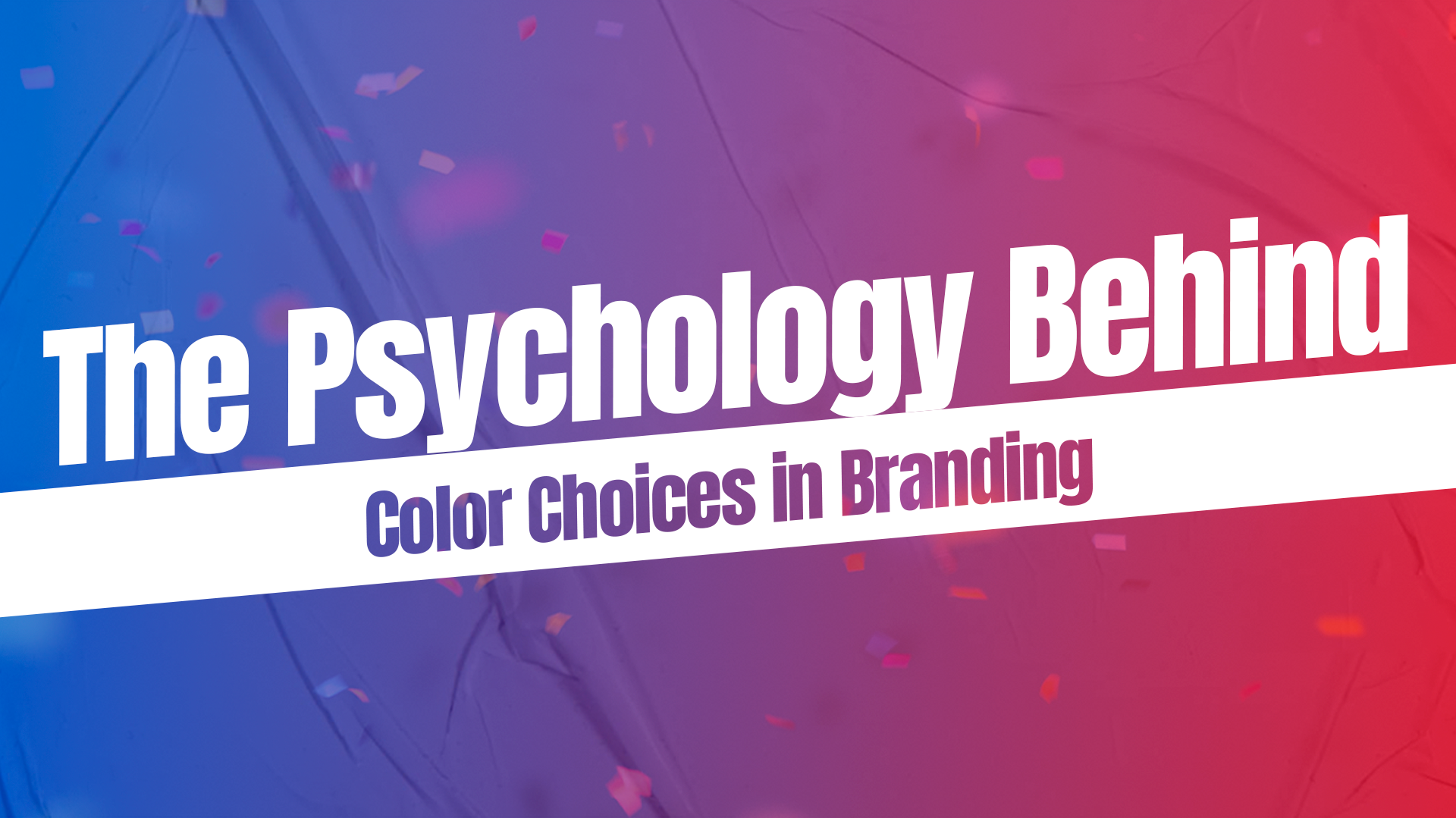The Psychology Behind Color Choices in Branding
Colors are more than just visual elements—they’re powerful emotional triggers that influence how people feel, think, and behave. In branding, color plays a critical role in shaping customer perception, building recognition, and driving decisions. The right color palette can make your brand memorable, while the wrong one can confuse or even repel your audience.
In this article, we’ll explore the psychology behind color choices in branding, how different colors impact emotions, and how to choose a palette that aligns with your brand’s personality and goals.
Why Color Matters in Branding
Studies show that up to 90% of first impressions about a product or brand are based on color alone. That means your color choices directly affect how people perceive your company’s tone, quality, and trustworthiness.
Colors have the power to communicate faster than words. A single glance at your logo or packaging can evoke specific emotions, set expectations, and influence buying behavior. That’s why successful brands use color intentionally—not randomly.
The Emotions Behind Common Brand Colors
Here’s a breakdown of what different colors typically represent in branding psychology:
- Red: Energy, passion, excitement, urgency. Red grabs attention and stimulates appetite, which is why brands like Coca-Cola and YouTube use it.
- Blue: Trust, professionalism, calmness, reliability. Blue is common among tech and finance brands like IBM, Facebook, and PayPal.
- Yellow: Optimism, friendliness, warmth, creativity. It’s a happy color that draws attention and conveys positivity (used by McDonald’s and IKEA).
- Green: Growth, health, nature, balance. It’s often associated with eco-friendly or wellness brands like Whole Foods and Spotify.
- Black: Sophistication, power, luxury, authority. Black adds elegance and timelessness—think Chanel or Nike.
- Purple: Creativity, imagination, wisdom, and luxury. Frequently used by brands that want to appear premium or innovative.
- Orange: Enthusiasm, confidence, energy. It’s playful and bold, often used by creative or youthful brands like Fanta or SoundCloud.
- White: Simplicity, purity, clarity. Minimalist brands use white to communicate transparency and focus (e.g., Apple, Tesla).
How to Choose the Right Colors for Your Brand
Choosing your brand’s color palette isn’t just about personal taste—it’s about aligning colors with your mission, values, and audience. Follow these steps to select colors strategically:
- Start with your brand personality. Is your brand bold and energetic or calm and professional? Match your color tone to that personality.
- Consider your target audience. Different demographics respond differently to colors. Younger audiences may prefer vibrant tones, while older ones lean toward muted or neutral palettes.
- Study your competitors. Choose colors that help you stand out in your market while maintaining relevance to your niche.
- Limit your palette. Stick to one primary color, one secondary, and one accent color. Too many colors dilute your identity.
- Test for contrast and accessibility. Make sure your colors are legible and appealing across all screens and print formats.
Examples of Color in Action
Let’s look at a few iconic examples of color-driven branding:
- Coca-Cola: Uses red to create energy, urgency, and excitement—perfect for a product associated with fun and celebration.
- Spotify: Its bright green symbolizes creativity and freshness, standing out in the entertainment industry.
- Apple: Relies on white and gray for simplicity and innovation, reinforcing its minimalist design philosophy.
Each brand uses color to reflect not just aesthetics, but emotion and meaning.
Common Mistakes in Color Branding
Even well-intentioned businesses can make color mistakes. Avoid these common pitfalls:
- Choosing personal favorites over strategy. Your favorite color may not align with your audience’s expectations.
- Using too many colors. A cluttered palette confuses users and weakens brand recognition.
- Ignoring cultural differences. Colors can have different meanings across regions. For example, white represents purity in Western cultures but mourning in some Asian countries.
- Skipping color testing. Always test your palette on different devices and backgrounds before finalizing it.
Final Thoughts
Color is one of the most powerful tools in your branding toolkit. It shapes how people perceive your business, influences their emotions, and helps you stand out in a crowded market. The key is to choose colors intentionally—based on psychology, audience insights, and your brand’s story.
At Mat Media, we help businesses craft color palettes that not only look stunning but also resonate emotionally with their target audiences. Whether you’re building a new brand or refreshing an existing one, our design experts ensure every shade tells your story with purpose and precision.

